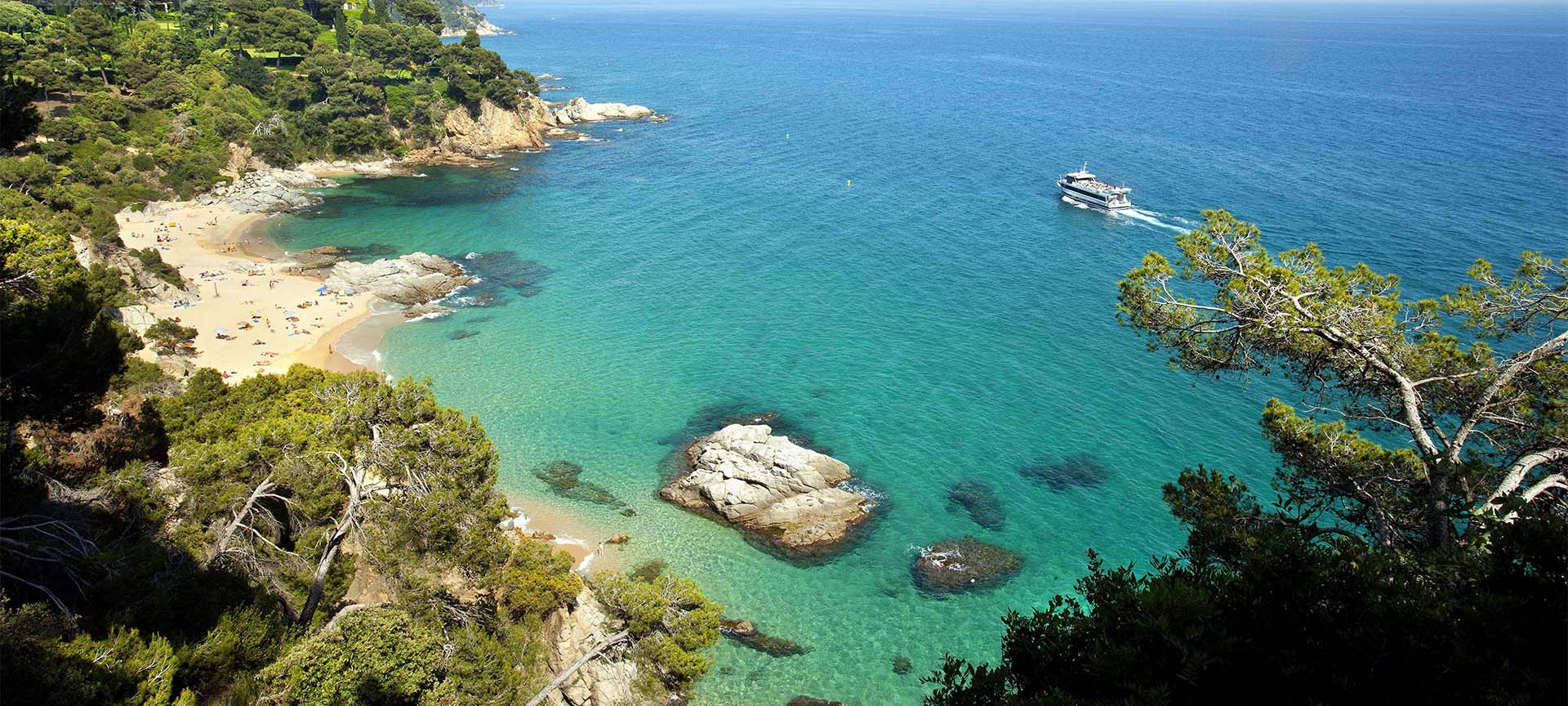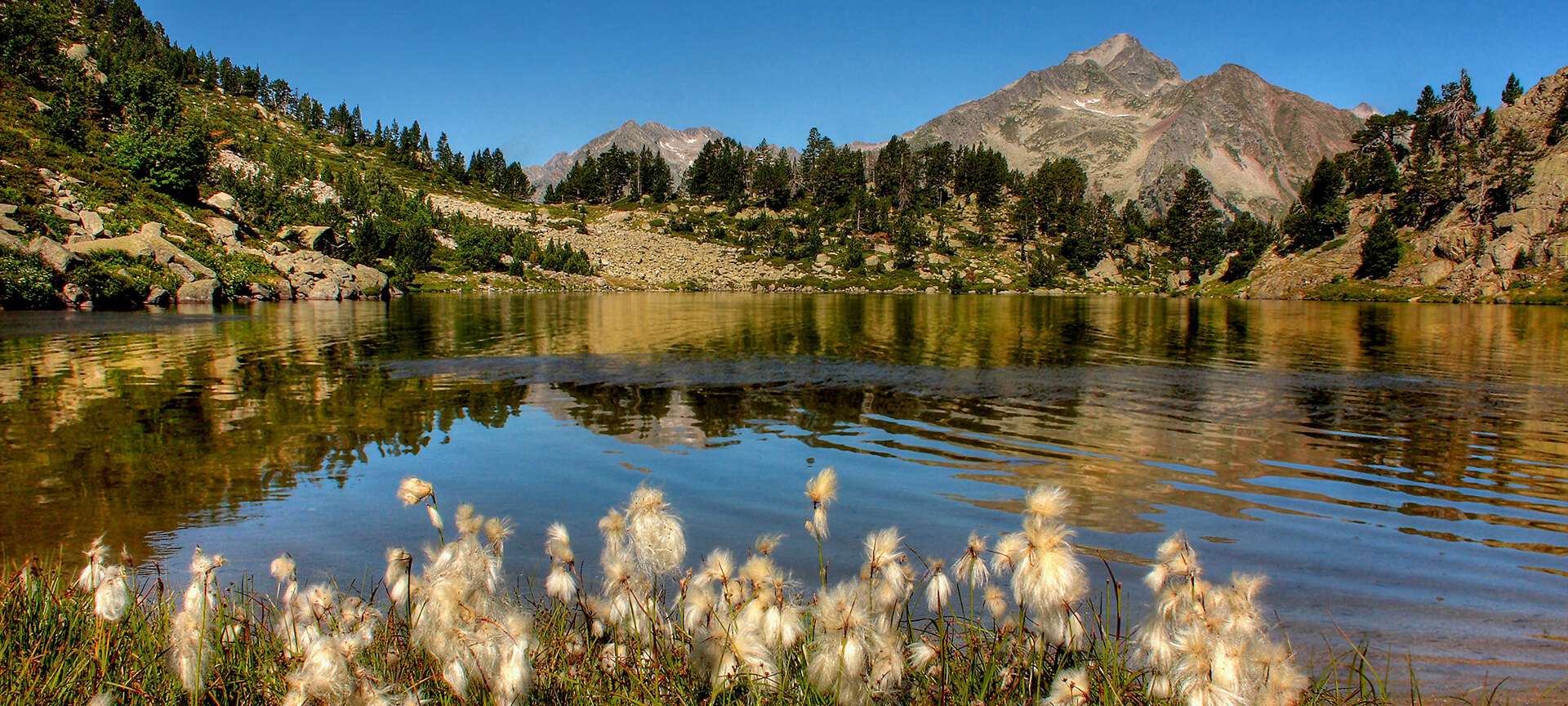On the most southerly part of the Costa Brava, lies the town of Lloret de Mar. With a deep seaside tradition, today it is one of the largest tourist centres on Girona's sea front.
The county of Selva, in which Lloret de Mar is set, has a broken coastal relief, with cliffs more than 100 metres high. These granite rocks sink into the Mediterranean, forming coves with incredible sea beds, suitable for diving, and broad sandy beaches. The landscape here is dominated by dense pinewoods that reach the line of the beach and that house within them many holiday developments and homes.
Cultural wealth
The quality of the water and the pleasant temperatures this Catalan region enjoys all year attract many visitors every year. The variety of accommodation is another of its attractions, as well as the large number of leisure opportunities. One of these is a walk round the historic centre, where the layout of an old seaside village awaits you.
The Promenade brings together nineteenth century and modernist houses, while elsewhere, the church of Sant Romà, the hermitage of Santa Cristina and the monument to the Woman Sailor, by Ernest Maragall, await you. Sant Romá dates from 1522 and boasts Romanesque and Gothic elements in its structure. For its part, Santa Cristina stands above the beach showing the character of buildings in transition between Baroque and Neoclassical.
Modernism has other beautiful examples in the municipality of Lloret de Mar, like the works of Puig i Cadafalch. The hermitage of La Verge de Gràcia, the transept that leads to Sant Pere del Bosc and the pantheon of the Costa Macià in Lloret cemetery bring you closer to the first Modernist works of this Catalan architect.
On the way out of the town, where the tourist developments begin on the shore beside the beach, like Cala Morisca, Platja de Fenals or Santa Cristina, stands a Roman sepulchral tower dating from the imperial era.
Regional cuisine
The position of Lloret de Mar between the sea and the mountains means its cuisine combines raw materials from very different spheres. Fish and shellfish add their flavour to game and to products from the fields. Broad beans, peas, cod salad ("esqueixada") or cold roast aubergines, onions and peppers ("escalivada") are some suggested starters. Chicken or rabbit with seafood, sea bass, gilt-head bream or prawns make up interesting second courses. Cold meats with "pà amb tomàquet" (bread with tomato) round off any menu. Among the desserts, we should point out seasonal fruit like strawberries, peaches, oranges or water melon. And, to bring out the flavour of such delicious food, there is nothing better than wines with the Ampurdán-Costa Brava Denomination of Origin.
This excellent regional cookery can be tasted both in Lloret de Mar and in other nearby places, like Tossa de Mar. Here you can see the harmonious juxtaposition of the walled town beside the sea and Vila Nova, the area with the most modern buildings. Blanes, for its part, is another important coastal tourist centre that adds to its range of beaches a beautiful historic centre. The castle of Sant Joan, the Gothic palace of the Counts of Cabrera and the Carrer Ample fountain are some of its main monuments.
Also on the Mediterranean is San Feliu de Guíxols. Excellent beaches, a marina and a town centre full of entertainment coexist with the hermitage of Sant Grau, the church of Porta Ferrata and natural viewpoints like Cap de Mort. And, as the culminating point of any tour: Girona, the provincial capital. The cathedral, the Jewish quarter, the Arab baths and the Archaeological Museum are sights not to be missed, as well as the walls and the churches of Sant Nicolau and Sant Feliu.




